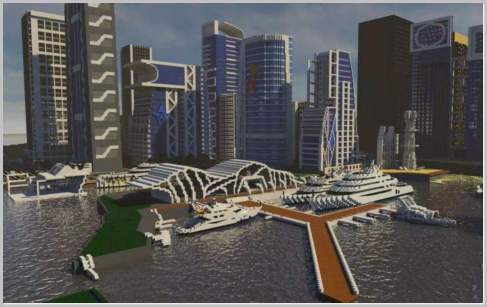
A megalopolis is generally defined as having some metropolises with cities at their core. For a metropolis, along with other important factors, the core city must have a population of 500,000 or more.
An agglomeration of surrounding built up areas with a population of 1 million or more must surround the metropolis. The metropolises, combined with any form of wilderness, rural, urban and other lands, must have a contiguous agglomeration of built up areas with a population of 10 million or more, which makes a megalopolis!
Examples of megalopolises:
The BosWash: This megalopolis includes the metropolises of New York City, Boston, Hartford, Philadelphia, Baltimore, and hundreds of cities, vast tracts of wilderness, farm areas, towns and suburbs. This is also called “Gottman’s Megalopolis”. Gottman was one of the first to define and analyze these complex structures.
The SoCal: This is the Western American megalopolis. It includes the most dramatic example of vast tracts of complete wilderness, in the deserts and mountains, vast tracts of farming area, and the major contiguous agglomeration along the coast and valley areas. Included are metropolises or near metropoloses of Los Angeles, Santa Ana, San Diego, Riverside, and San Bernardino. In some lists, So Cal is not mentioned, which illustrates that many factors go into defining a megalopolis.
The Capital Zone in Japan: Included are the metropolises of Tokyo, Yokohama, and Kawasaki.
The Keihan Zone in Japan: Included are the metropolises of Osaka, Kobe and Kyoto.
The Vaal Triangle in South Africa: The first African continental megalopolis includes the metropolises of Johannesburg, Pretoria, and the cities of the Vaal Triangle.
The San Francisco Bay Area, which includes the City of San Francisco, Oakland, San Jose, and the Peninsula cities and towns, along with vast areas of mountains and farmlands, is sometimes included as a megalopolis, but San Francisco is physically separated from agglomeration in the East Bay and South East bay urban centers by the bay, itself.
Other areas that may be considered to be megalopolises strictly by population and closeness (not necessarily contiguous buildup or other factors) of built up areas. These are considered because they feature close proximity of metropolises, with their agglomerations of built up areas.
The Ganges River Valley in India.
The Blue Banana: Ireland and Great Britian
Chi Pitts: The Midwestern cities of Chicago to Pittsburg
The I-35: San Antonio to Oklahoma City to Wichita
Rio De Janiero, Sao Paulo, Campinas
Cairo-Giza: Greater Cairo
The Seoul region and much of South Korea
Mexico City and surrounding areas

